Picture this: You step into your backyard, pluck a creamy, custard-like fruit from your own cheremoya tree, and savor its sweet, tropical flavor—often called the “ice cream fruit.” The cheremoya tree (Annona cherimola) is a subtropical gem that brings exotic allure and delicious rewards to any garden. Whether you’re a novice gardener or a seasoned plant enthusiast, growing a thriving cheremoya tree is within your reach with the right knowledge. In this comprehensive guide, we’ll walk you through every step—planting, care, pollination, and troubleshooting—to ensure your cheremoya tree flourishes. Ready to transform your garden into a tropical paradise? Let’s dive in! 🌞
What Is a Cheremoya Tree? An Overview of the “Custard Apple” 🌟
Origin and Characteristics
The cheremoya tree, scientifically known as Annona cherimola, hails from the Andes region of South America, thriving in the high-altitude valleys of Peru, Ecuador, and Colombia. This subtropical tree, often evergreen but semi-deciduous in cooler climates, grows to 15–30 feet tall, with velvety, dark green leaves and fragrant, triangular flowers. Its heart-shaped fruits, weighing up to a pound, boast a creamy, white flesh that blends flavors of banana, pineapple, and vanilla—earning its nickname, the “custard apple.”
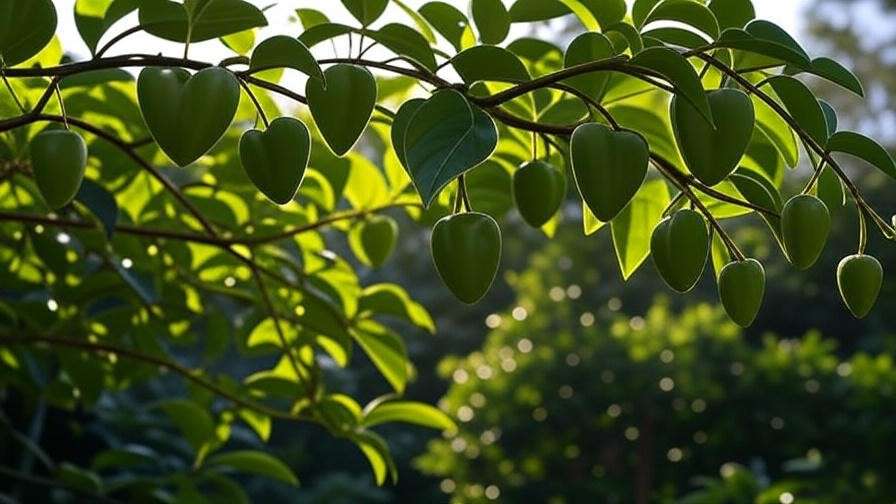
Benefits of Growing a Cheremoya Tree
Why grow a cheremoya tree? Beyond its delectable fruit, packed with vitamin C, vitamin B6, fiber, and antioxidants, this tree adds ornamental beauty to your garden with lush foliage and delicate blooms. It’s also eco-friendly, attracting pollinators like bees and beetles, enhancing your garden’s biodiversity. According to Dr. Maria Lopez, a horticulturist with over 20 years of experience, “Cheremoya trees are a fantastic choice for home gardeners seeking both aesthetic appeal and a bountiful harvest.”
Choosing the Right Environment for Your Cheremoya Tree ☀️
Climate and Hardiness Zones
Cheremoya trees thrive in warm, frost-free climates, ideally in USDA hardiness zones 10–11. They prefer temperatures between 65°F and 80°F, though they can tolerate brief dips to 25°F. Frost is their kryptonite, so gardeners in cooler regions should consider growing cheremoya in pots or greenhouses for winter protection. If you live in a borderline zone, like parts of coastal California, proper site selection can make all the difference.
Site Selection Tips
To set your cheremoya tree up for success, choose a spot with full sun exposure—6 to 8 hours daily—for optimal photosynthesis and fruit production. The soil should be well-draining and slightly acidic, with a pH of 6.5–7.5. Test your soil with a home kit to confirm its suitability. Protect your tree from strong winds by planting near a fence or building, as its branches are brittle. Pro Tip: If your soil is heavy clay, amend it with sand and compost to improve drainage. 🧪
Planting Your Cheremoya Tree: Step-by-Step Guide 🌿
When and Where to Plant
Spring or early summer is the ideal time to plant a cheremoya tree, allowing roots to establish before cooler weather. Select a healthy nursery tree with strong stems and vibrant leaves—avoid those with yellowing foliage or root-bound pots. Grafted trees are preferred, as they bear fruit faster (2–3 years) than seed-grown ones (3–5 years).
Planting Process
- Dig the Hole: Make it twice as wide and deep as the root ball to encourage root spread.
- Amend the Soil: Mix in compost or well-rotted manure to boost nutrients and drainage.
- Plant the Tree: Place the tree at the same depth as its nursery pot, backfill with soil, and tamp gently to remove air pockets.
- Water Thoroughly: Soak the soil to settle roots, then mulch with wood chips to retain moisture.
- Space Properly: Allow 15–20 feet between trees for air circulation and growth.
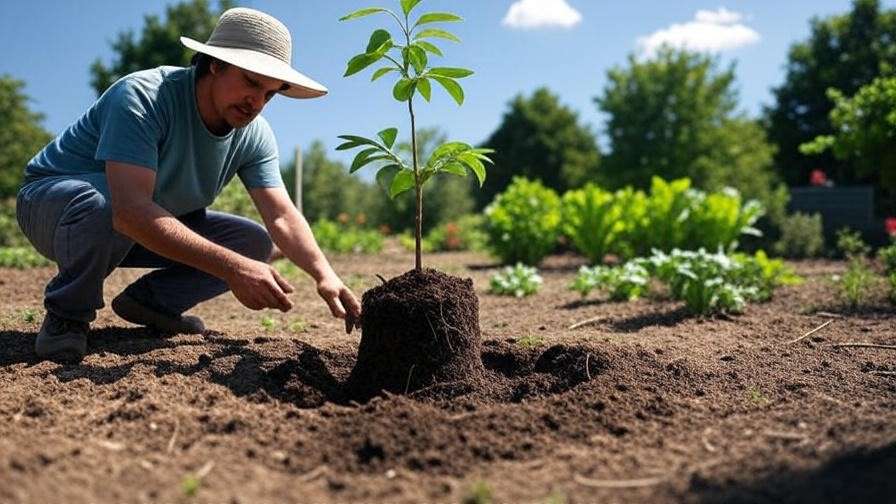
Container Planting for Small Spaces
No backyard? No problem! Cheremoya trees thrive in containers, making them perfect for patios or balconies. Use a 15-gallon or larger pot with drainage holes and a potting mix of peat, perlite, and compost for aeration. Example: Lisa, a gardener in San Diego, grows her cheremoya in a 20-gallon pot, moving it indoors during rare frosts. She reports, “It’s compact but produces dozens of fruits annually!”
Essential Care Tips for a Thriving Cheremoya Tree 🌼
Watering Needs
Water young cheremoya trees deeply 1–2 times per week, adjusting for rainfall. Mature trees need less frequent watering but benefit from deep soaks during dry spells. Overwatering can lead to root rot, so ensure the soil dries slightly between waterings. Look for soggy soil or yellowing leaves as signs of overwatering, and reduce frequency if needed.
Fertilizing for Optimal Growth
Feed your cheremoya tree with a balanced NPK fertilizer (10-10-10) every 2–3 months during the growing season (spring to early fall). Organic options like compost or fish emulsion work well too. Cheremoyas require micronutrients like magnesium and zinc for fruit production—consider a foliar spray if leaves show deficiencies. Pro Tip: Avoid fertilizing in late fall to prevent tender growth before winter. 🌱
Pruning and Training
Prune your cheremoya tree in late winter or early spring to remove dead wood, improve airflow, and encourage fruiting branches. Shape young trees to a central leader or open vase structure for stability. Stake young trees in windy areas to prevent tipping. Certified arborist John Rivera advises, “Avoid heavy pruning in summer, as it stresses the tree and reduces fruit yield.”
Pollination: Ensuring a Bountiful Harvest 🍎
Understanding Cheremoya Pollination
Cheremoya trees have a unique pollination challenge: their flowers are protogynous, meaning they’re female before turning male, and natural pollinators like beetles are often scarce in home gardens. This can lead to low fruit set without intervention.
Hand Pollination for Better Yields
To boost your harvest, hand-pollinate your cheremoya tree:
- Collect Pollen: In the morning, use a soft brush to gather pollen from male-stage flowers (when anthers are powdery).
- Apply to Female Flowers: Gently brush pollen onto female-stage flowers (when stigmas are sticky).
- Repeat Daily: Pollinate over several days for best results.
Pro Tip: Use a small paintbrush or cotton swab for precision, and store pollen in a cool, dry place for up to 24 hours. 🐝
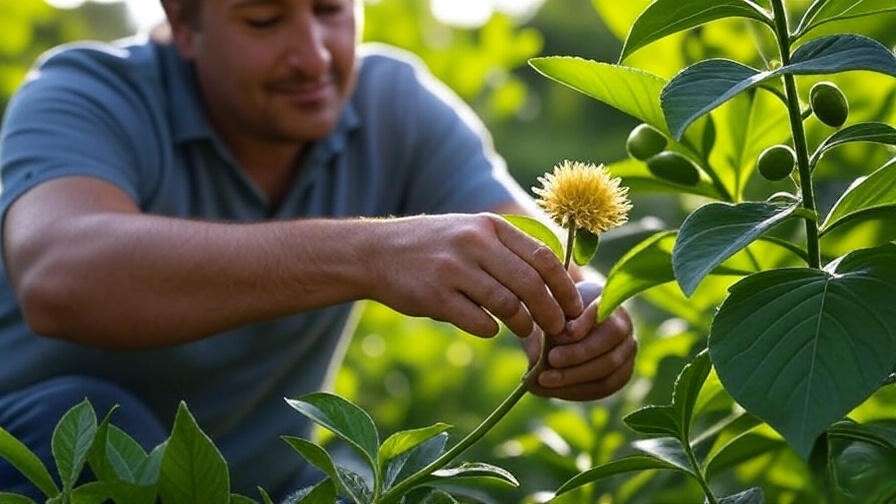
Common Problems and Solutions for Cheremoya Trees 🛠️
Pests and Diseases
Cheremoya trees face pests like aphids, scale insects, and mealybugs. Inspect leaves regularly and treat infestations with neem oil or insecticidal soap. Root rot, caused by overwatering, and anthracnose, a fungal disease, are common issues. Prevent them by ensuring proper drainage and avoiding overhead watering. Companion planting with marigolds can deter pests naturally.
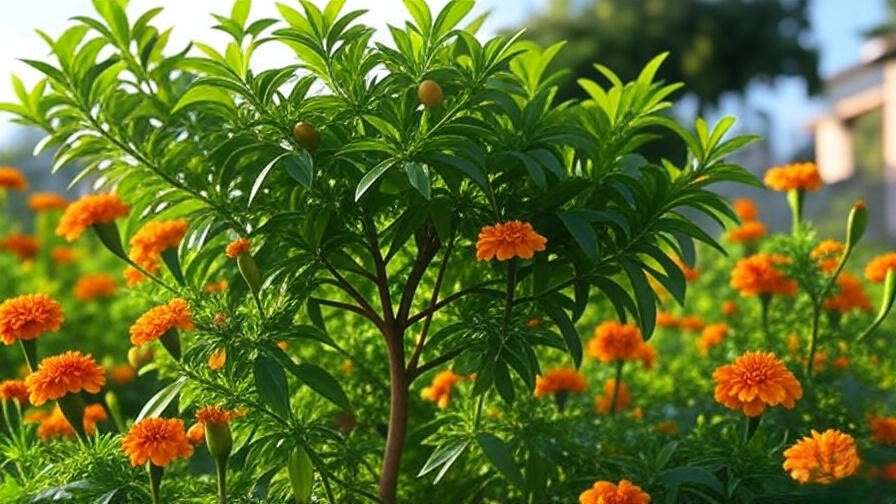
Environmental Challenges
Frost can damage young trees, so cover them with frost blankets during cold snaps. Sunburn may affect exposed branches—use shade cloth for protection. Yellowing leaves often signal nutrient deficiencies; apply a balanced fertilizer or chelated micronutrients to correct them. Case Study: In Florida, gardener Mia resolved root rot by elevating her tree’s planting bed and improving drainage.
Harvesting and Enjoying Your Cheremoya Fruit 🥭
When to Harvest
Patience pays off with cheremoya fruit! The fruits are typically ready to harvest 5–7 months after pollination, when they reach a yellowish-green hue and feel slightly soft to the touch. A ripe cheremoya yields gently under pressure, much like a ripe avocado. Avoid picking too early, as unripe fruits lack the creamy texture and sweet flavor that make cheremoyas so special. Check your tree regularly during the harvest season, which often spans late fall to early spring in ideal climates.
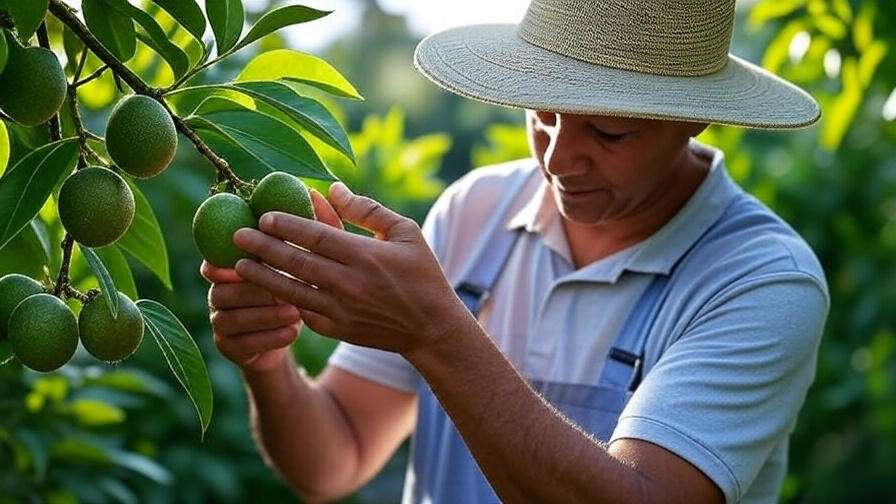
How to Harvest and Store
To harvest, gently twist the fruit from the branch to avoid damaging the tree or bruising the fruit. Use clean, sharp pruning shears for stubborn fruits to prevent tearing. Once picked, cheremoyas can ripen at room temperature for 2–4 days if slightly underripe. Store ripe fruits in the refrigerator for up to a week to maintain freshness. For longer storage, scoop out the pulp, remove the toxic seeds, and freeze it in airtight containers for smoothies or desserts. Pro Tip: Label frozen pulp with the date to enjoy your harvest for up to 6 months! ❄️
Delicious Ways to Use Cheremoya
Cheremoya’s custard-like flesh is a treat on its own, but its versatility shines in the kitchen. Try these ideas:
- Fresh: Scoop out the pulp with a spoon for a quick, nutritious snack.
- Smoothies: Blend cheremoya with banana, mango, and a splash of coconut milk for a tropical delight.
- Sorbet: Puree the pulp with lemon juice and sugar, then freeze for a refreshing dessert.
- Salads: Pair with citrus segments or berries for a vibrant fruit salad.
Fun Fact: Mark Twain once described cheremoya as “the most delicious fruit known to men,” and its creamy texture makes it a natural fit for decadent recipes! 😋
FAQs About Growing Cheremoya Trees ❓
To address common reader queries and boost SEO, here are answers to frequently asked questions about cheremoya tree care:
- How long does it take for a cheremoya tree to bear fruit?
Grafted cheremoya trees typically produce fruit in 2–3 years, while seed-grown trees may take 3–5 years. Proper care, including pollination and fertilization, speeds up the process. - Can cheremoya trees grow indoors?
Yes, cheremoyas can thrive indoors in large pots with ample sunlight (at least 6 hours daily). Use grow lights in low-light areas and maintain warm temperatures (65°F–80°F). - Why is my cheremoya tree dropping fruit?
Fruit drop can result from poor pollination, water stress, or nutrient deficiencies. Ensure consistent watering, hand-pollinate flowers, and fertilize regularly to minimize drop. - Are cheremoya seeds toxic?
Yes, cheremoya seeds contain alkaloids and are toxic if ingested. Handle them carefully, and keep them away from children and pets. The flesh is perfectly safe and delicious.
Conclusion: Your Journey to a Thriving Cheremoya Tree 🌴
Growing a cheremoya tree is a rewarding adventure that combines the joy of gardening with the thrill of harvesting your own exotic fruit. By choosing the right planting site, providing consistent care, mastering hand pollination, and addressing challenges like pests or frost, you can cultivate a healthy, productive tree that enhances your garden and your plate. Whether you’re savoring a fresh cheremoya or blending it into a tropical smoothie, the fruits of your labor will be worth it. Start your cheremoya journey today, and share your progress or favorite recipes in the comments below! 🌿
What’s your next step? Plant a cheremoya tree, try hand-pollination, or experiment with a new recipe. Let us know how it goes, and happy gardening!













